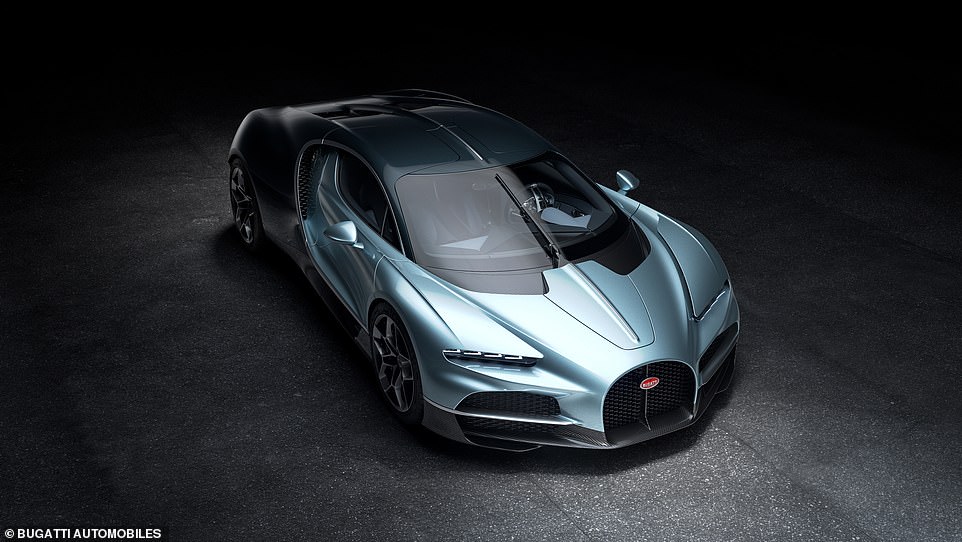Bugatti celebrates 20 years of hypercars by launching an “incomparable masterpiece” to the world: the 1,800 HP Tourbillon.
The next-generation hypercar from France’s most exclusive automaker was unveiled at a live-streamed event called pour l’éternité (for eternity).
Headlining the Molsheim headquarters is the Tourbillon’s hybrid powertrain and naturally aspirated V16 engine.
The successor to the Chiron will not be delivered until 2026 and only 250 examples will be built. The name, named after a Swiss-French watchmaking patent, inspires the same constant timekeeping and the same original, complex and beautiful creation that Bugatti prides itself on.
If you’re planning to save over the next two years, you’ll need the best interest rate in the world (prices start at €3.8 million) – that’s just over £3.21 million for us Brits.
Bugatti celebrates 20 years of hypercars by launching an “incomparable masterpiece” to the world: the 1,800 HP Tourbillon
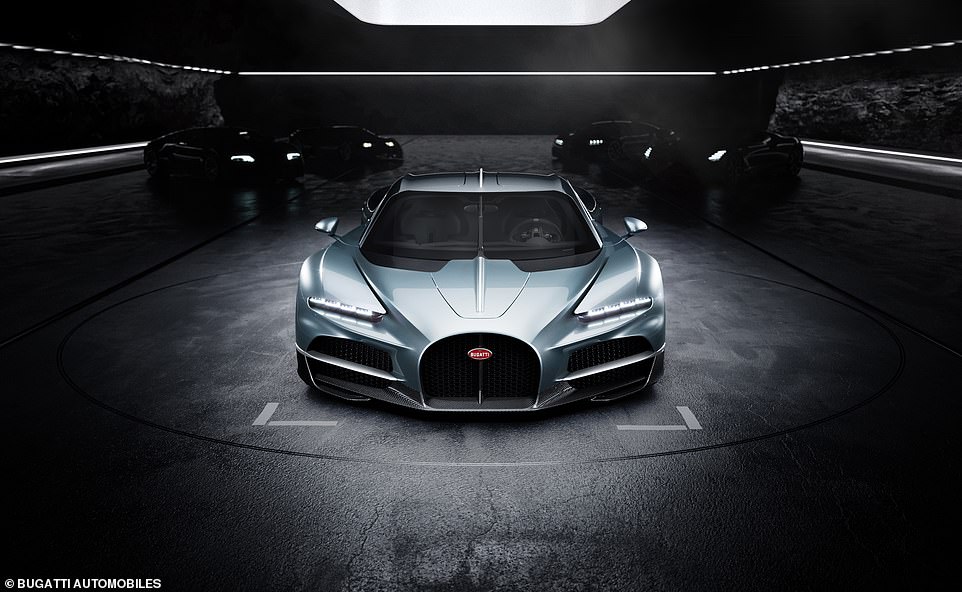
The successor to the Chiron will not be delivered until 2026 and only 250 examples will be built. It will cost at least £3.21 million
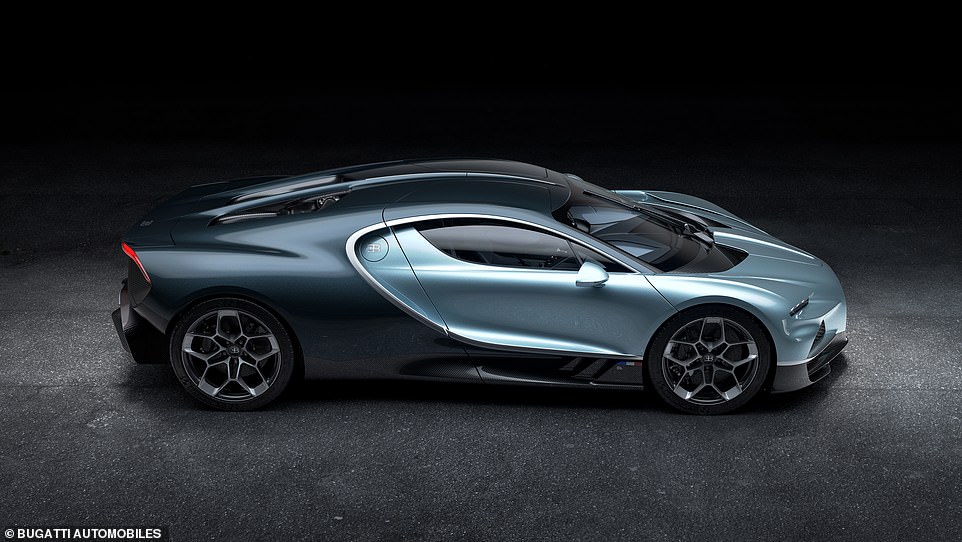
The name, named after a Swiss-French watchmaking patent, inspires the same consistent timekeeping and the same original, complex and beautiful creation that Bugatti prides itself on.
Bugatti has been teasing the automotive world with details about its Chiron successor for the past few weeks, with CEO Mate Rimac saying the V16 is naturally aspirated to make it as “emotional” as possible.
We can now reveal that the new 8.3-litre V16, designed with the help of Cosworth, is combined with a front electric axle with two electric motors and an electric motor mounted on the rear axle, which Bugatti says follows in the footsteps of the W16 engine ‘of reference’.
The Tourbillon’s “internal combustion engineering, combined with the immediate torque and flexibility of electric motors” is “next generation” and offers 1,800 HP.
There are 1,000 HP from the combustion engine and 800 HP from the electric motors.
The engines are powered by a 25 kWh battery housed in the central tunnel behind the passengers.
The Veyron had four turbochargers to achieve 1,001 hp, making the naturally aspirated V16 “an extraordinary achievement,” says Bugatti.
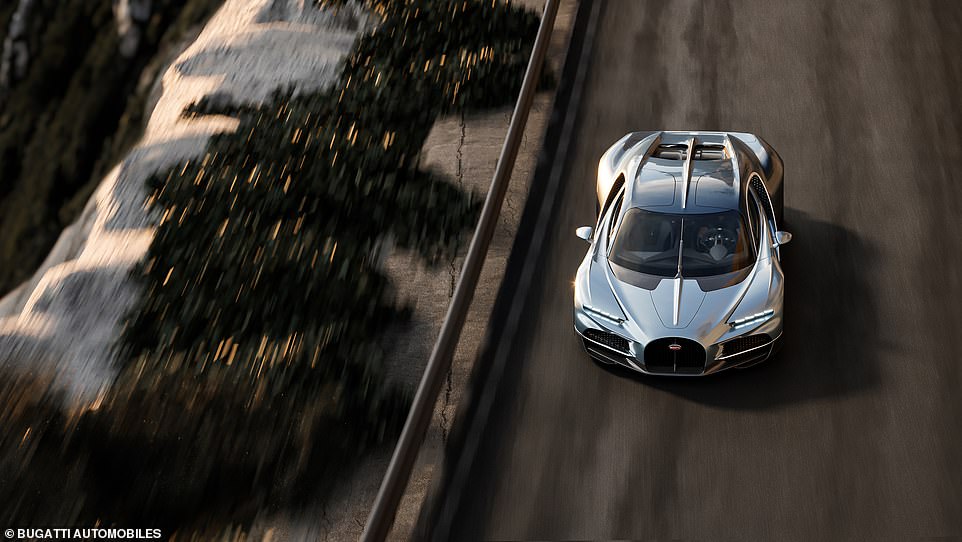
CEO Mate Rimac says the V16 is naturally aspirated to make it as “emotional” as possible
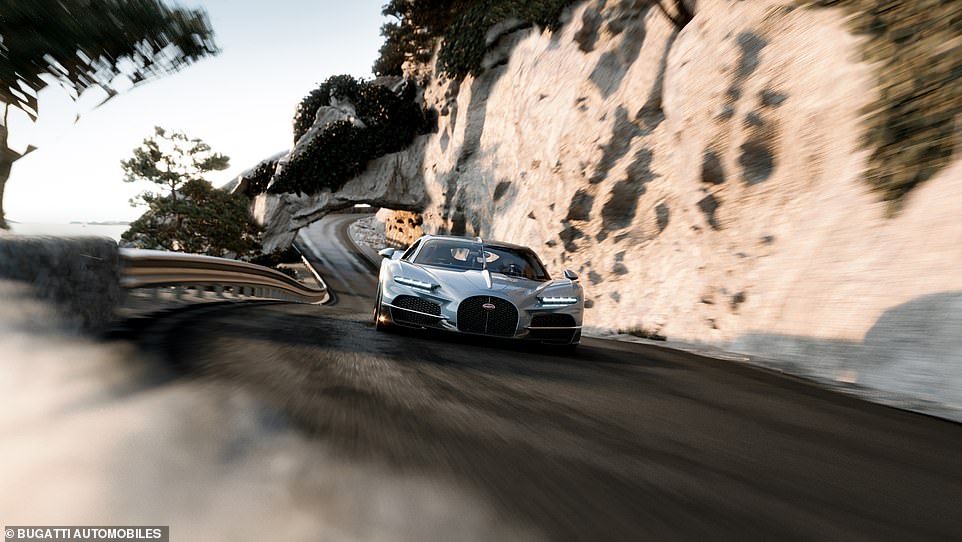
The new 8.3-liter V16, designed with the help of Cosworth, is combined with a front electric axle with two electric motors and an electric motor mounted on the rear axle.
Expect all-wheel drive (for a happy, adventurous owner), full torque vectoring, and an all-electric range of 37 miles.
Bugatti says it defies the auto industry’s expectations that “every new model is heavier than its predecessor, especially in the case where a new model adds a hybrid powertrain or more performance.”
However, with just a 225kg motor, an electric propulsion system and a large battery, the Tourbillon weighs less than the Chiron: “a testament to incredible engineering.”
The Tourbillon also has an all-new chassis and weight-saving next-generation carbon body structure, front composite air ducts, and a lighter, stiffer 3D-printed structural base. The 3D-printed aluminum suspension has saved 45 percent in weight compared to the Chiron.
Emilio Scervo, Bugatti CTO, commented: “It was important to us that this car retain that raw, pure analog feel of a naturally aspirated combustion engine, while combining it with the agility and capability that electric motors provide.” .
The look is classic Bugatti, Mate Rimac said his and the design team’s “guiding path” were Ettore Bugatti’s mantras “if it’s comparable, it’s no longer a Bugatti and “nothing is too beautiful.”
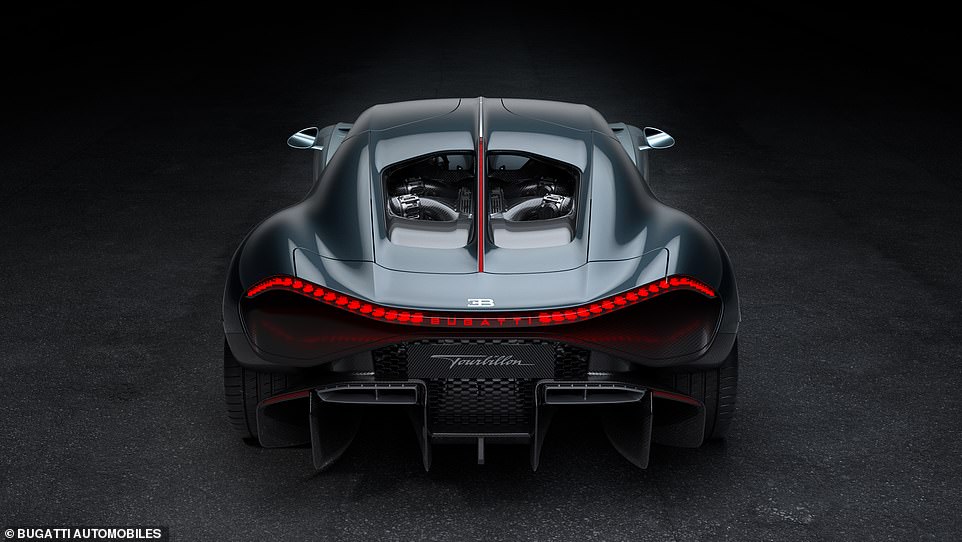
With just a 225kg motor, an electric propulsion system and a large battery, the Tourbillon weighs less than the Chiron: “a testament to incredible engineering.”
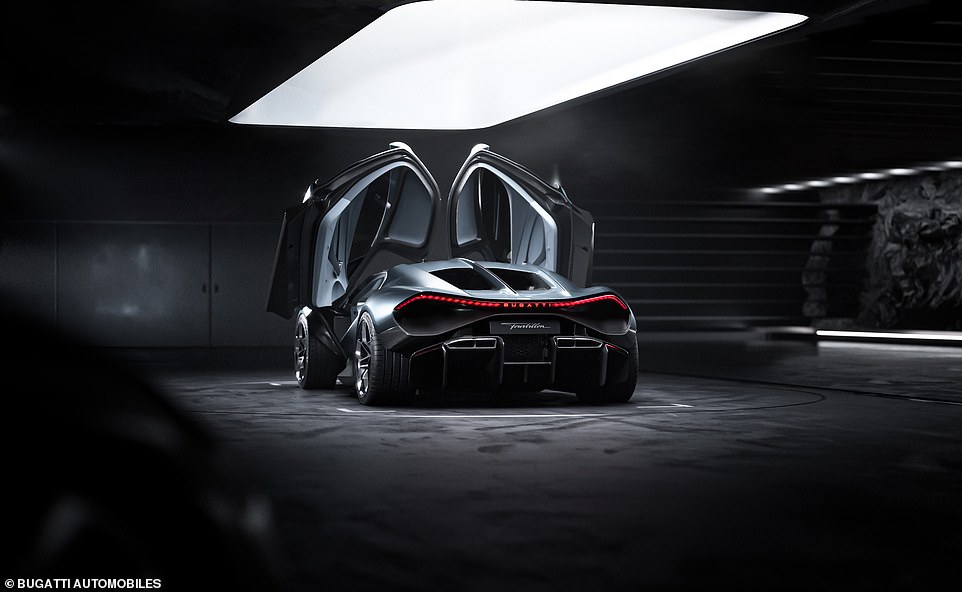
The look is classic Bugatti, Mate Rimac said his and the design team’s “guiding path” were Ettore Bugatti’s mantras “if it’s comparable, it’s no longer a Bugatti and “nothing is too beautiful.”
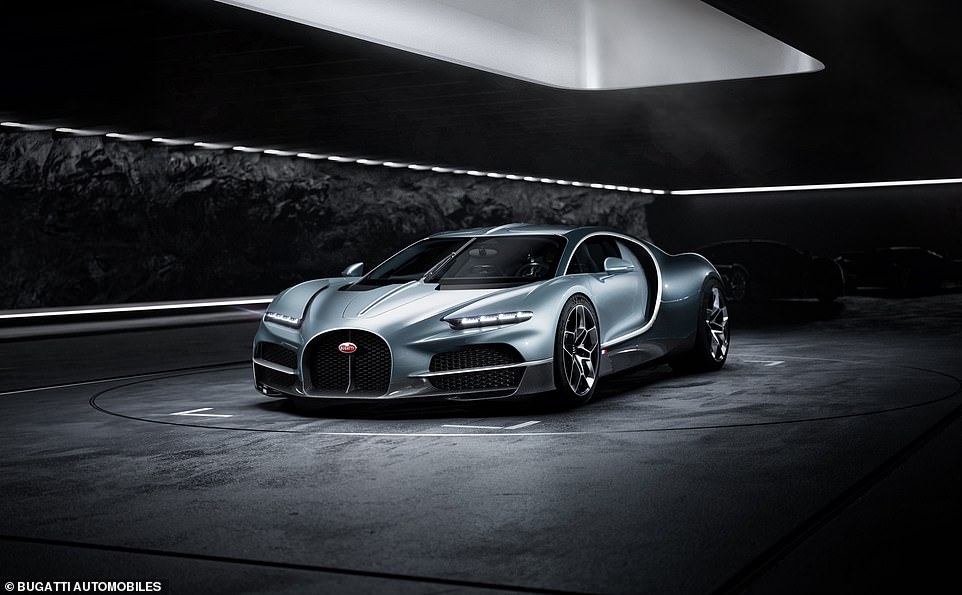
These are the four historic Bugatti design elements: the horseshoe-shaped grille (i.e. from the Type 35), the Bugatti line, the central crest and the two-color division.
And following the Tourbillon’s concept of timelessness, the design will “never get old.” These are the four historic Bugatti design elements: the horseshoe-shaped grille (i.e. from the Type 35), the Bugatti line, the central crest and the two-color division.
The horseshoe is the heart of the design, and all the lines flow from there. “Shaped by speed”, the Tourbillon focuses on aerodynamics and thermodynamics, with the submersible rear spoiler, a rising diffuser behind the passenger cabin, left and right flying fenders and the sculpted front overhang that also houses a storage compartment. side storage.
Frank Heyl, Bugatti Design Director, said: “Since Jean Bugatti began applying bold two-tone paint to his cars, it has become an important part of Bugatti’s design DNA, and in the Tourbillon, we evolved it one step further. once again in an authentic but modern way.’
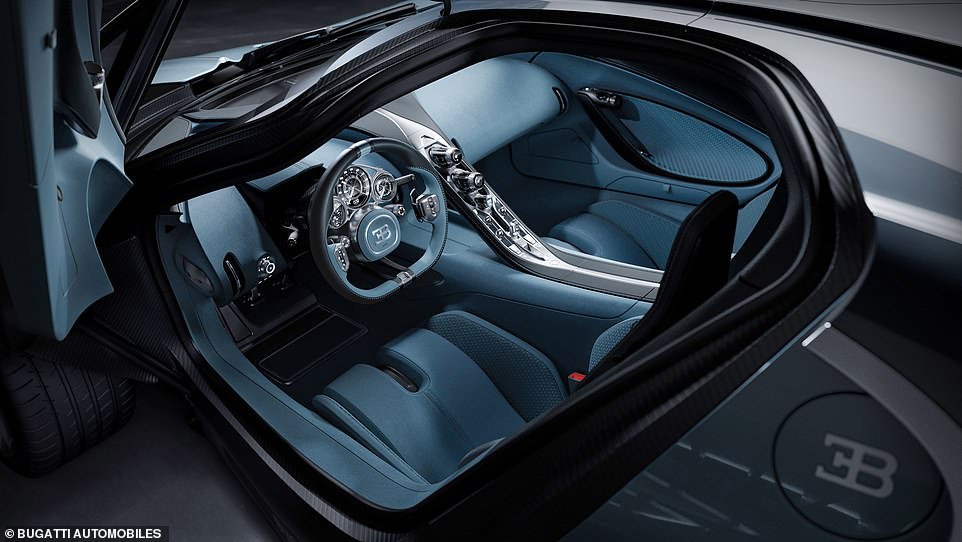
Inside and out, it is designed so that “the Tourbillon will be a concours of elegance not just 10 years from now, but perhaps 100 years from now.”
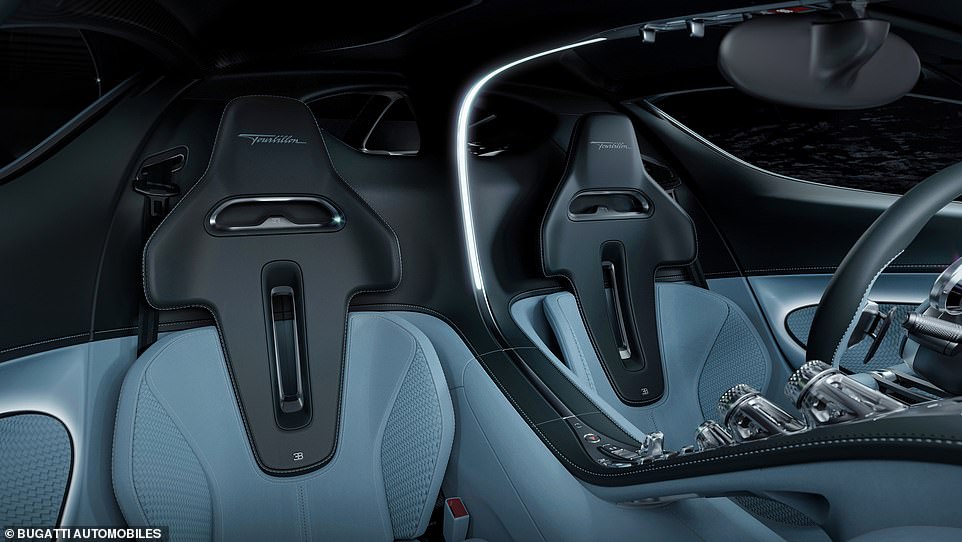
For maximum comfort and lightness, the seats do not move, in their place comes the pedal board, which allows more interior space to be gained.
Bugatti is taking a firm stance against ultra-modern, tech-happy interiors with its multimillion-dollar hypercar, saying it will focus on imagining “the Tourbillon in concours d’elegance not just in 10 years but perhaps in 100 years.”
In doing so, the design follows an analog watchmaking experience.
The instrument cluster has been designed and built by Swiss watchmakers, with 600 parts including titanium and precious stones: “a masterpiece of intricate engineering.”
The fixed-hub steering wheel will rotate, so Tourbillon drivers will have an unobstructed view of its instrumentation.
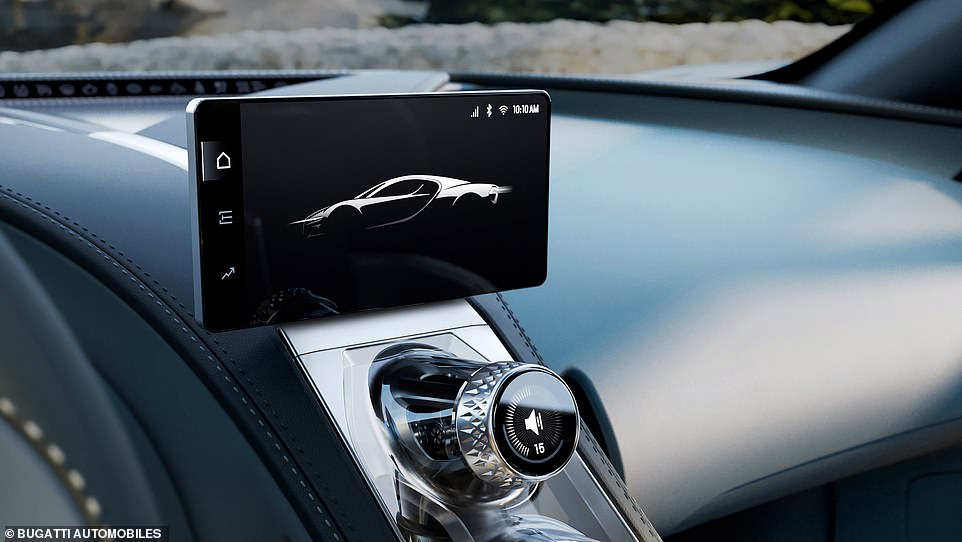
There is only one screen in the car, which will only show Apple CarPlay and vehicle data and can be completely hidden from view. rotates both horizontally and vertically
And there’s only one screen in the car, which will only show Apple CarPlay and vehicle data (if any Android users are signing up for a Tourbillon, it’s safe to assume they can afford to upgrade to an Iphone). It can be completely hidden from view.
The screen folds out from the center console as a vertical reversing camera and a horizontal infotainment screen.
The center console combines glass and aluminum and has a historical nod in the form of a lever to pull to start and push to stop the engine.
The speakers use drivers to take advantage of existing interior space, instead of traditional speakers and woofers.
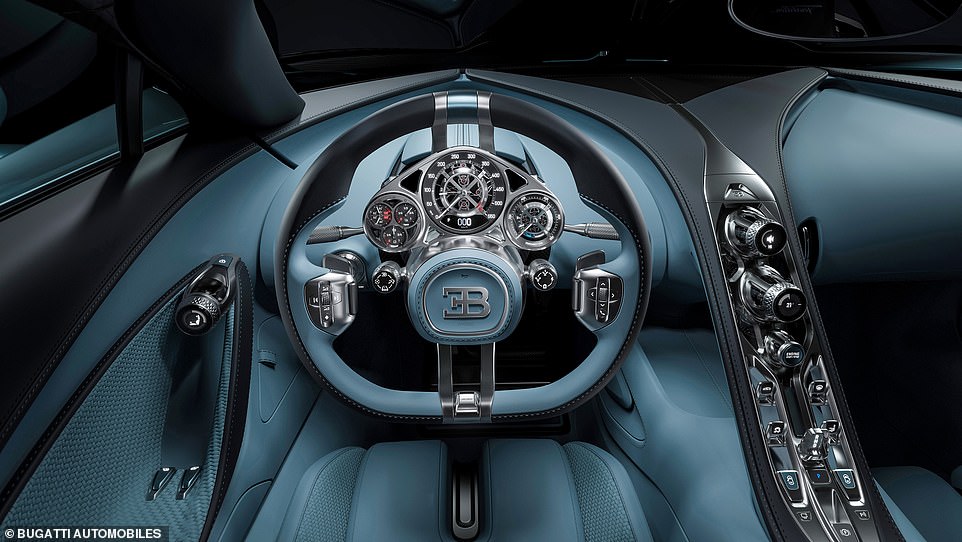
The fixed-hub steering wheel will rotate around the driver’s panel, so Tourbillon drivers will have an unobstructed view of its instrumentation.
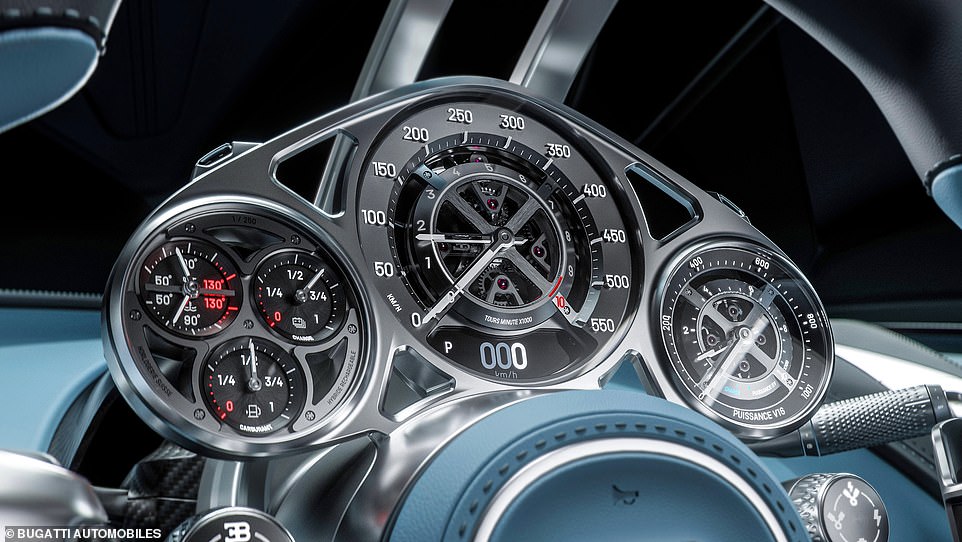
The instrument panel has been designed and built by Swiss watchmakers, with 600 parts including titanium and precious stones: “a masterpiece of intricate engineering.”
For maximum comfort and lightness, the seats do not move, but rather the pedals come towards you, allowing more space for “longer trips and daily use.” That’s a daily driver.
Emilio Scervo said: “We wanted someone to be able to take any part of this car, from inside, outside or under the skin, and believe it could be placed in an art gallery.
“The result is a beautiful car inside and out, the most powerful Bugatti to date, which simultaneously elevates mechanical fascination and technical beauty to a whole new level.
The Bugatti Tourbillon is now entering its testing phase, with prototypes already on the roads; supercar watchers take note.
The 250 production vehicles will be assembled by hand at the Bugatti Atelier in Molsheim, following the latest W16, Bolide and W16 Mistral-powered Bugatti models.
Some links in this article may be affiliate links. If you click on them, we may earn a small commission. That helps us fund This Is Money and keep it free to use. We do not write articles to promote products. We do not allow any commercial relationship to affect our editorial independence.

